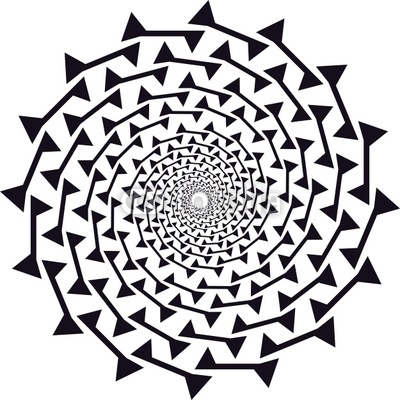|
(2016
final exam assignment) Sample Student Final Exam Essays 2016 Essay 1. Define "genre" + examples |
LITR 4370 Tragedy

|
 |
Angela Copper
8
July 2016
Genre in General: A Look at Literature Classification through Anime
The taxonomy of literature is as intricate as literature itself. Genre as
it pertains to literature can be defined as a “type” of literature, but this
definition, in its brevity, creates more questions than answers. Not only are
there different types of genres, as in subject/audience identification, form,
and narrative, but there is also the matter of subgenres. Additionally, most
works have more than one genre classification—such as a romantic comedy. In this
sense, there is no one genre that will define any artistic work. Also, two
titles with the same subject/audience genre and form genre may have different
narrative genres. The intricacies of genres can be explained through a
comparison of the Anime titles Hunter x
Hunter (2011) and Naruto (2002).
Perhaps the most common way that
the term “genre” is used is in reference to “subject/audience identification”
genres. The “subject” refers to the content found in a work of art – for
example, the Japanese animation style is what classifies both
Hunter x Hunter and
Naruto as anime. The anime subject
genre is characterized by its tendency toward accurate body proportions, hard
lines, cinematic camera angles, disproportionately large eyes, unique or vividly
colored hair, exaggerated facial expressions, and its origin in Japan. However,
all of these elements do not have to be present for a work of art to qualify as
anime, as seen through the exaggerated muscles and comically large stomach size
of Naruto’s Legendary Stupid
Brothers. This distortion of proportions for the sake of humor is part of what
makes Naruto and
Hunter x Hunter animes
shōnen anime. Literally meaning “boy
animation” in Japanese, Shōnen anime is a subgenre of anime which refers to the
“audience” of the viewers. While the demographic for a particular anime within
the shōnen genre can vary, shōnen anime are typically aimed at boys between the
ages of 8 and 18. Thus, when someone refers to
Hunter x Hunter or
Naruto as a “shōnen anime,” they are
classifying it through the use of its subject/audience identification genre.
Just because Naruto and
Hunter X Hunter have the same
subject/audience identification genre, does not mean that they have the same
formal genre. Formal genre categorizes a work based on its number of narrative
voices as well as the type of voice(s) and its relation to the audience. There
are three major forms, “narrator or single voice”, “drama or dialogue”, and
“narrator + dialogue.” The characters of
Naruto never speak directly to the audience, and there is no narrator in the
series. Thus, it is classified as a drama or dialogue. Conversely, while the
characters of Hunter x Hunter never
directly address the audience, there is a narrator who voices over many scenes
and speaks directly to the viewer. Due to this difference in narrative voice,
Hunter x Hunter fits within the
narrator + dialogue genre. Both series differ distinctly from the literature
classified under the “narrator or single voice” genre, such as a lecture, in
which there is no dialogue but rather only a monologue of a voice or narrator
speaking directly to an audience.
A third type of genre that can be used to classify a work is its
“narrative genre.” The narrative genre is used to classify a work by how the
plot is constructed. There are four major narrative genres as defined by Northop
Frye in Anatomy of Criticism (1957):
tragedy, comedy, romance, and satire. In
Hunter x Hunter, the plot centers around the main character Gon in his quest
to find his long lost father, Ging. In seasons one through six, Gon’s relatively
peaceful life is taken over by his desire to meet his father. He sets off on an
adventure, wherein he has to fight for survival in the name of achieving his
goal. Along the way, Gon makes friends and in the final, seventh season he meets
his father. This is what drives Hunter x
Hunter into the romance genre, which is defined by a story driven by a
problem of separation, action involving the furthering of a physical quest, and
challenges or trials along the way.
Gon’s desire to meet his father matches with a Romance protagonist’s desire for
fulfillment, and in the last episode of the series, he and his father look out
into the sunset from atop a large, mountainous tree – creating the
characteristically romantic “larger than life” point of view that symbolizes
transcendence of the main character. However,
Hunter x Hunter cannot be defined as
a pure romance. The majority of characters from
Hunter x Hunter are far from solely
good or bad. While the protagonist Gon may be a “true good” character, an
optimistic ten-year-old boy who would do anything to help a friend, this could
be contrasted with the character of Hisoka, a magician with strong bloodlust who
initially is an adversary of Gon. Though he later becomes a strong ally and
helps Gon to reach his goal of meeting his father Ging, Hisoka’s character is
introduced as the first “villain” to the series, as he playfully antagonizes Gon
and his friend Killua. The “mixed” character of Hisoka fits more into the realm
of tragedies, which typically have less exclusively good or bad characters.
Tragedy also fits the story of Hunter x
Hunter in the subplot or story arc of season six, wherein the main
antagonist of the season, a humanoid creature called King Meruem, finds himself
with amnesia. Meruem spends the better half of the season trying to discover the
truth about his past, while his followers try to convince him to destroy the
human race. The season ends with the deaths of King Meruem, as well as the death
of his only friend, just as he discovers the truth about himself and begins to
develop true compassion toward the human race. The problem of Meruem’s threat to
mankind is resolved, and yet due to the season’s focus on his characterization,
he has become a tragic hero of sorts. The viewer empathizes with Meruem as do
the characters within the show. Similarly, in
Naruto, while the overarching plot
appears to be a romance narrative, there are tragic elements to be found within
subplots and characterization. The plot of
Naruto revolves around the efforts of
the titular character to become recognized by the members of his village and to
rescue a friend, Sasuke, who was kidnapped by a villain, Orochimaru. This plot
is romantic in nature, with Orochimaru being an absolute villain with no
redeeming qualities that Naruto seeks to vanquish. Yet, the characterization
leans toward a tragic narrative’s “mixed” characters when the character of
Sasuke is taken into account. Sasuke allowed his teammates to nearly die trying
to rescue him, killed his brother, and destroys his village in the name of
revenge for his slaughtered family. It is revealed that Sasuke was not
kidnapped, but in fact left the village willingly and does not wish to return,
which turns the romantic plot narrative on its head.
Though the main plot and character elements of
Hunter X Hunter and
Naruto can be classified as a
combination of the romance and tragedy narrative genres, the episodic nature of
Anime allows for comedic elements to enter the narrative genre. Comedic story
lines can be seen in “filler episodes” of the shows, which often begin with a
problem or mistake which is not significant, compared to that of a tragedy. The
problem does not affect the overarching plot of the show because it does not
affect the world on a greater scale in any way. The conflict in a comedic
narrative is often related to a mistaken identity or false identity. For
example, in episode #161 of Naruto,
the characters Potcha and Mondai attempt to infiltrate Naruto’s village,
disguised as two villagers named Rock Lee and Might Guy. The village, apart from
Naruto, sees through Potcha and Mondai’s obvious disguises, and decide to make
them do outrageous tasks which the villagers claim Lee and Guy always do. As in
a comedic narrative’s concluding action, the episode concludes when the real Lee
and Guy show up and Potcha and Mondai abandon their disguises. The problem is
resolved without any tragic error or threat to the audience. Due to the
intricate characterization and the separation of story arcs from season to
season, Hunter x Hunter and
Naruto are alike to most works in
that they cannot therefore fit into one single narrative genre.
One narrative genre that neither
anime fits into is satire. Satire parodies a topic such as “humanity or society
in general, or particular classes or pastimes [e.g., Christmas, the Prom,
freshman year], but typically the genre satirizes politics, sex, and religion”
(White) and it finds itself often depending on the audience’s prior knowledge of
another story or situation for the audience to fully enjoy the wit and comedy
elements of satire. Satires, as imitations of a previously established
narrative, can vary wildly on structure and components, but the tone will
indubitably be less serious and more focused on humor.
Though Naruto and
Hunter x Hunter are both in the
subject/audience identification genre of shōnen anime, they branch in different
directions when it comes to narrative and formal genre. Even within the
subject/audience identification genre, the shows diverge into different subject
genres based on the contents of each show. Genres are diverse and constantly
overlap, with no one piece of literature being a “pure” genre. This mixture is
what keeps literature interesting—if a film or a book or a play was following a
strict formula for tragedy, for example, it would be too heavy. This is where we
find aspects of “comedic relief” within an otherwise bleak story. The most
important thing about genre is that it is not always clearly defined. After all,
genres are more in the business of classifying other works instead of being
classified, themselves.


